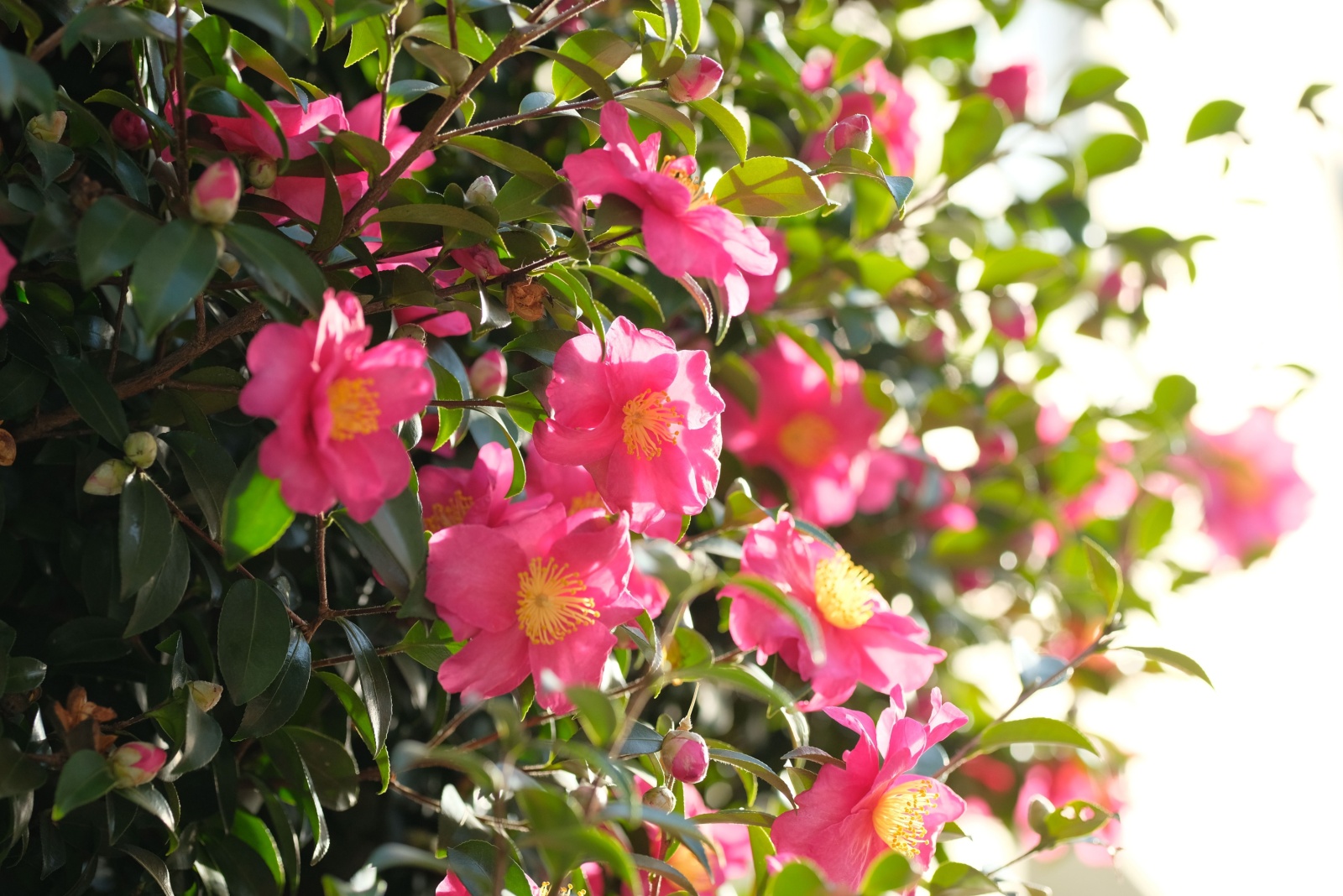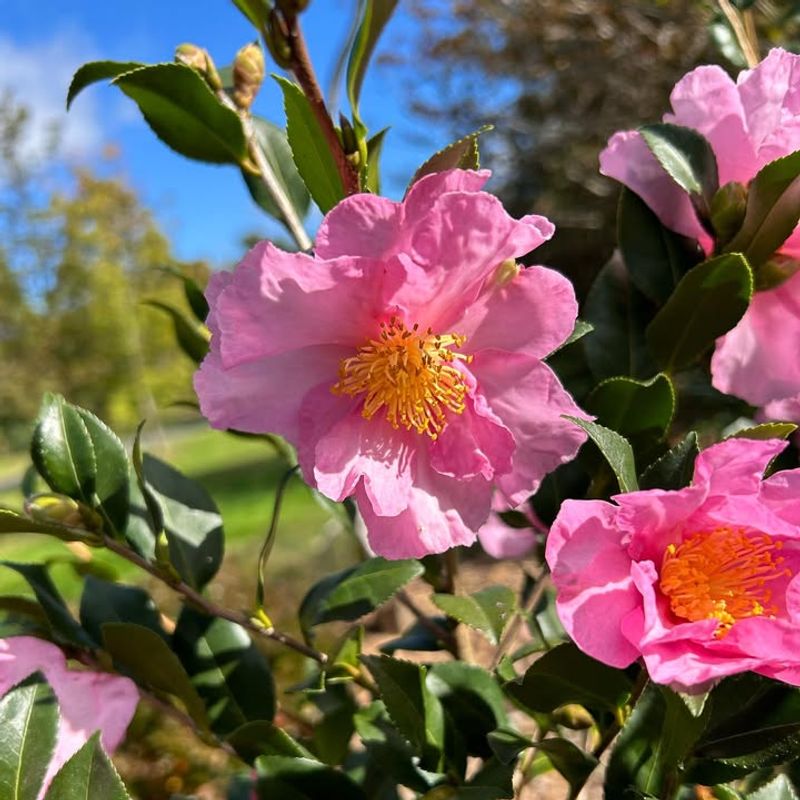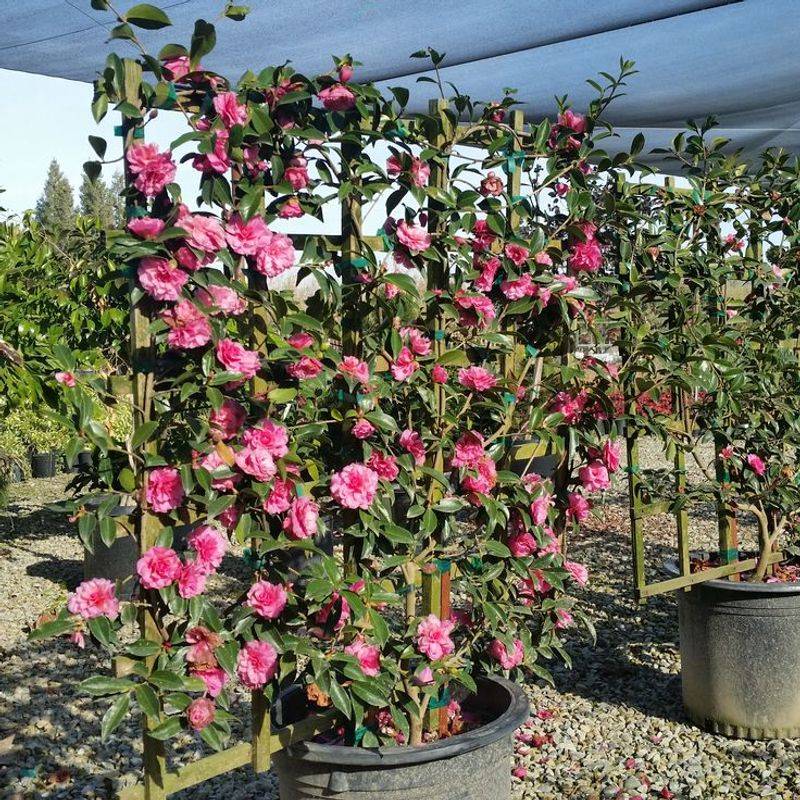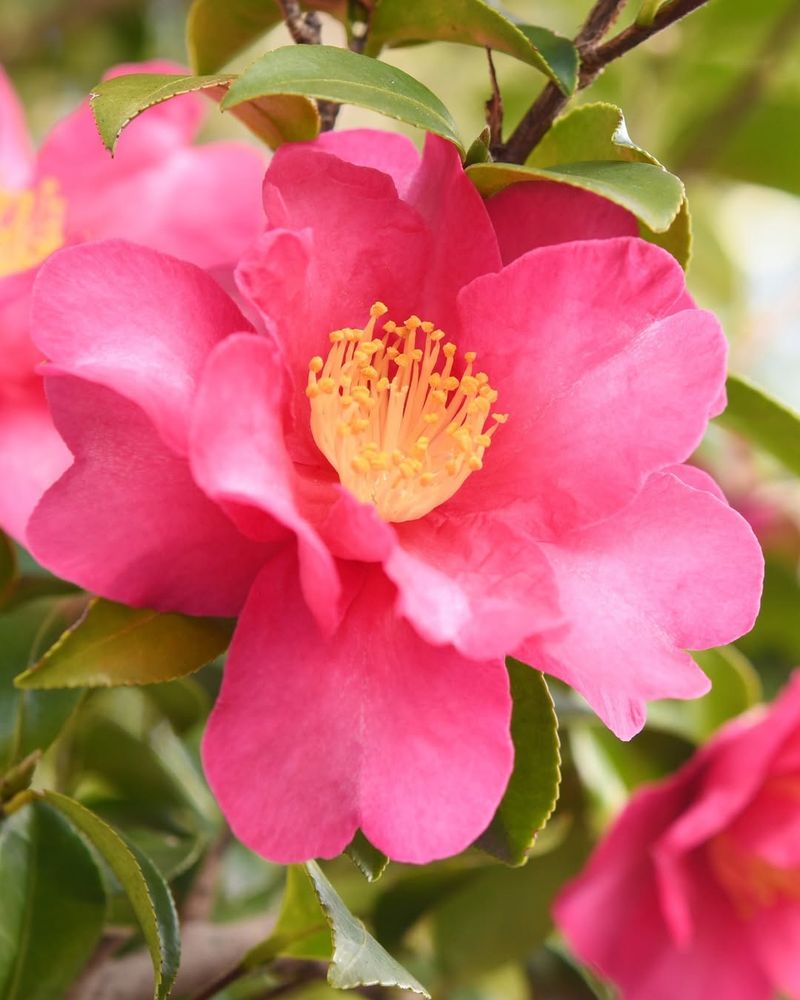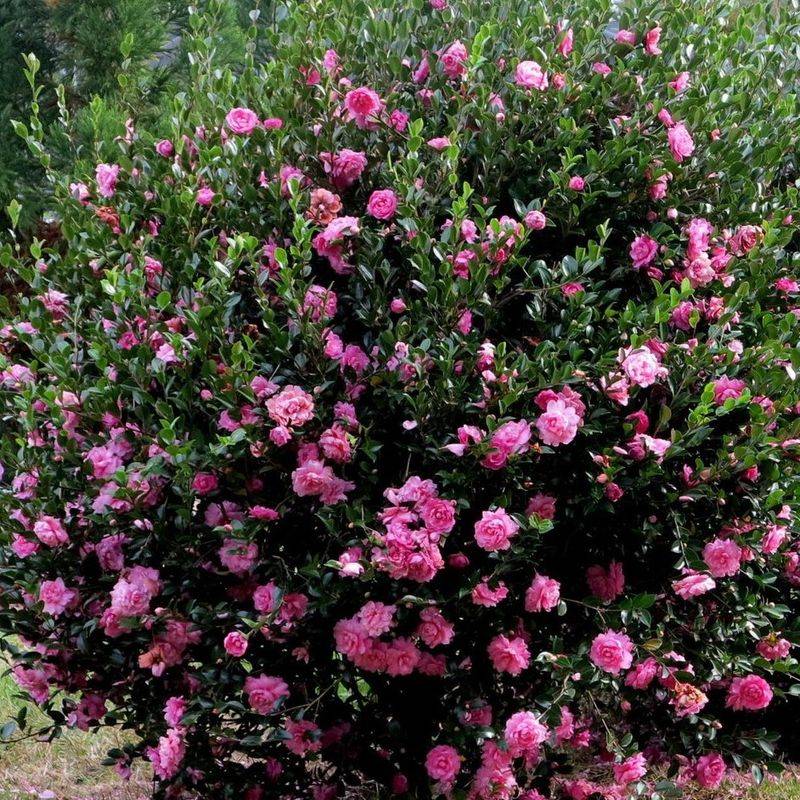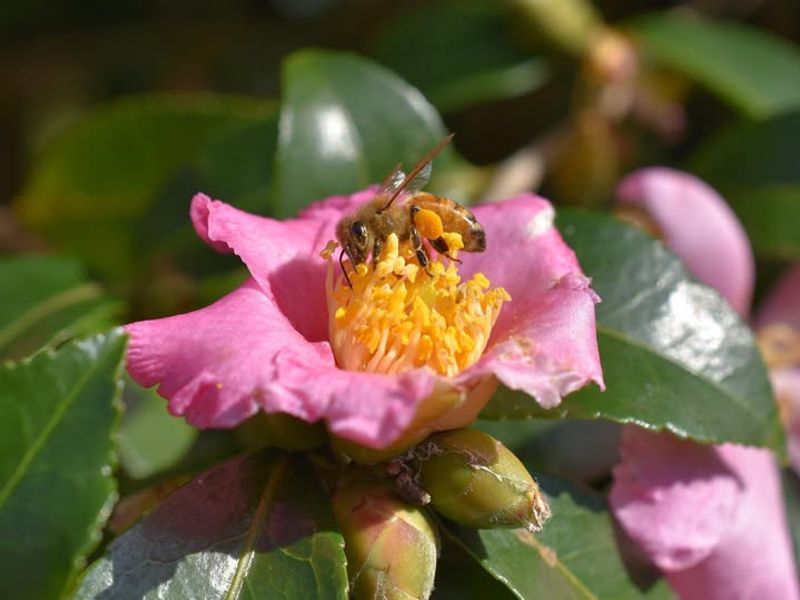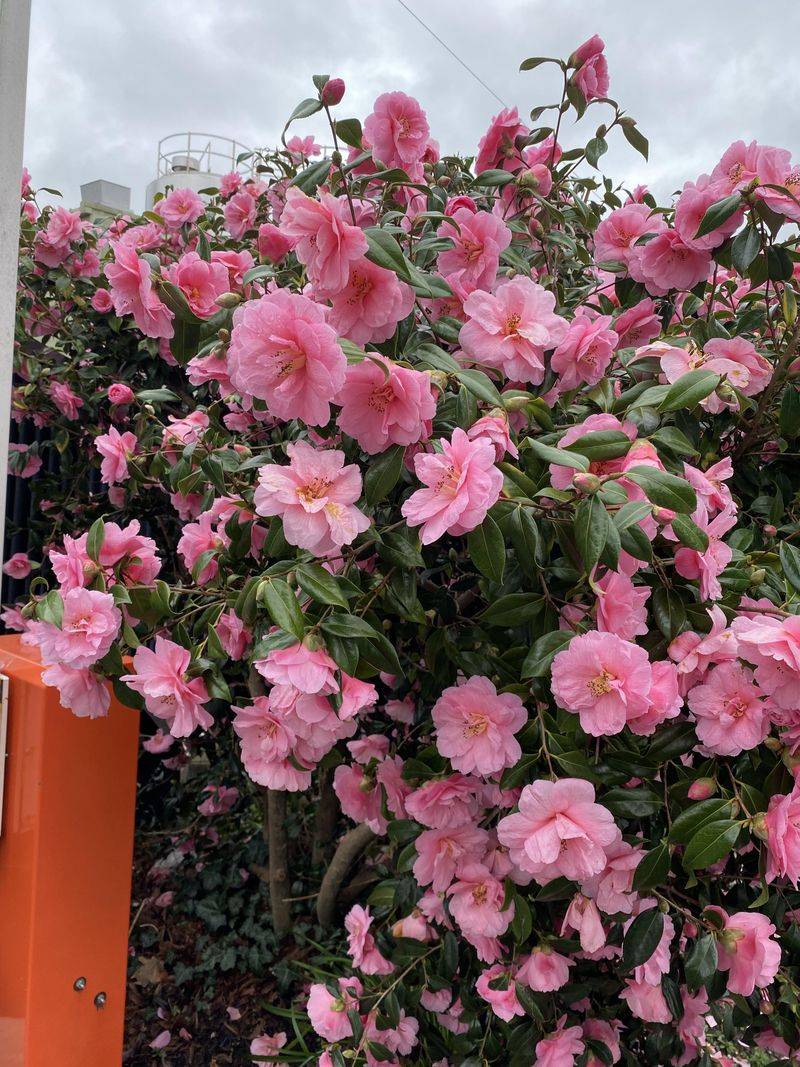Tennessee gardeners love a plant that can handle mood swings—warm days, chilly nights, even a surprise frost or two.
And while many blooms tuck away for the year, this one steps up and brings the color when it’s needed most. The pink beauty turning heads is Sasanqua Camellia.
1. Fall Blooming Beauty That Defies The Season
While most flowering plants take a break when autumn arrives, Sasanqua Camellias burst into bloom just as temperatures start dropping. From October through December, these shrubs produce waves of delicate pink flowers that brighten up gardens when color is scarce.
Tennessee gardeners love this timing because it extends the blooming season well past summer. The flowers appear right when you need them most, creating a stunning display during football season and holiday gatherings.
2. Tougher Than It Looks
Don’t let those delicate petals fool you. Sasanqua Camellias can handle Tennessee’s unpredictable weather better than their fancy cousin, the Japonica Camellia. They tolerate heat, humidity, and even light frosts without skipping a beat.
Many gardeners appreciate that these shrubs don’t need constant attention or special treatment. Once established, they’re remarkably low-maintenance and continue producing beautiful blooms year after year, even through mild winter cold snaps that would damage more sensitive plants.
3. Perfect Size For Modern Landscapes
Forget about massive, overgrown shrubs that swallow your entire yard. Sasanqua Camellias typically grow 6 to 10 feet tall, making them ideal for smaller suburban lots and modern landscape designs.
You can easily shape them into hedges, use them as foundation plantings, or let them grow naturally as specimen plants. Their manageable size means less pruning work for you and more time enjoying those gorgeous pink blooms throughout the fall season.
4. Shade-Loving Champion
Got a shady spot under tall trees where nothing seems to thrive? Sasanqua Camellias actually prefer partial shade, making them perfect problem-solvers for those tricky garden areas. Morning sun with afternoon shade creates ideal growing conditions.
Unlike sun-hungry plants that struggle in dimmer spots, these shrubs flourish where light is filtered. Tennessee gardeners often plant them under oak trees or on the north side of buildings, transforming previously bare areas into blooming showcases.
5. Attracts Pollinators When They Need It Most
Bees and butterflies struggle to find food sources in late fall, but Sasanqua Camellias provide a crucial nectar supply during this challenging time. The flowers offer an important energy boost for pollinators preparing for winter.
Watching these beneficial insects visit your camellia blooms adds extra enjoyment to your garden experience. By planting this shrub, you’re not just beautifying your yard but also supporting local wildlife populations when other food sources have disappeared for the season.
6. Acidic Soil Specialist
Tennessee’s naturally acidic soil can challenge many ornamental plants, but Sasanqua Camellias absolutely thrive in these conditions. They prefer soil pH between 5.5 and 6.5, which matches what’s already in most Tennessee gardens.
This means you probably won’t need to amend your soil extensively before planting. Just add some organic matter like pine bark or compost, and your camellia will be happy. It’s refreshing to work with a plant that loves what you’ve already got instead of fighting against it.
7. Evergreen Structure All Year Long
Even when the flowers fade, Sasanqua Camellias keep your garden looking polished with their glossy, dark green leaves that stay attractive throughout winter. This evergreen quality provides structure and color when deciduous plants are bare sticks.
Tennessee gardeners value plants that earn their keep in all seasons, and these shrubs deliver. The dense foliage creates privacy screens, defines garden borders, and serves as a handsome backdrop for spring and summer bloomers that take center stage later.

